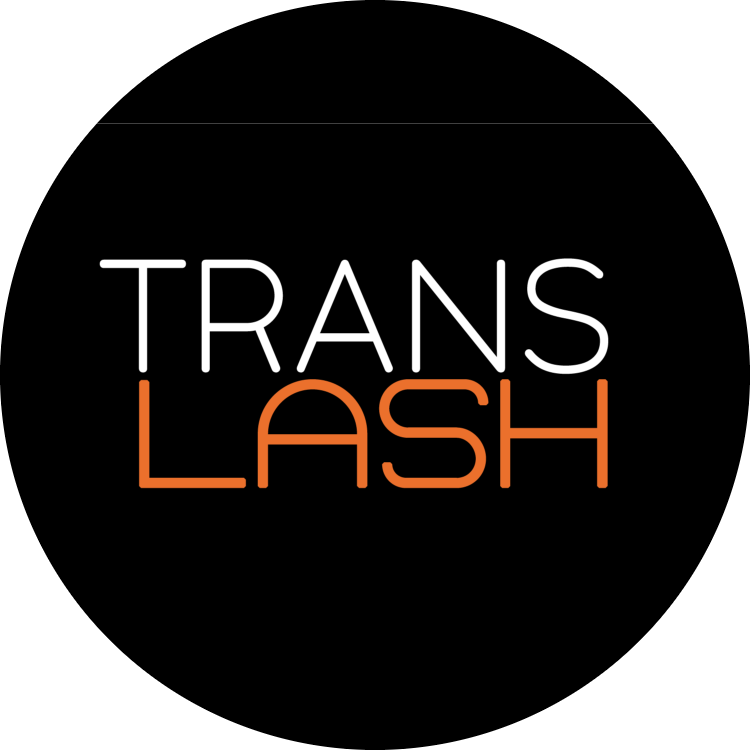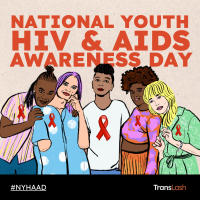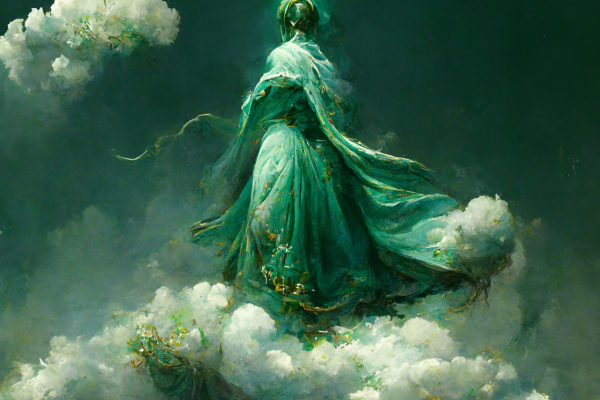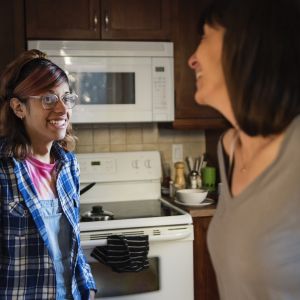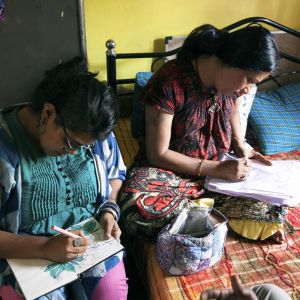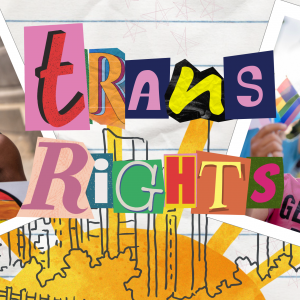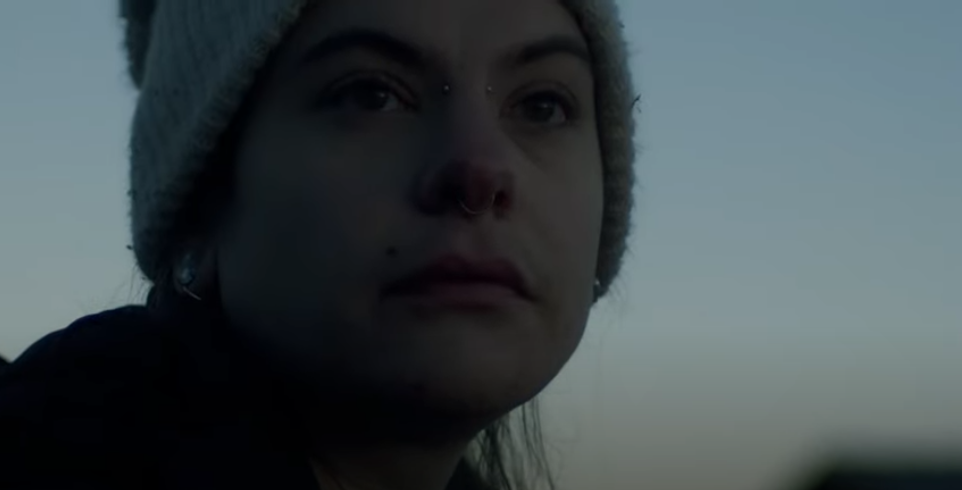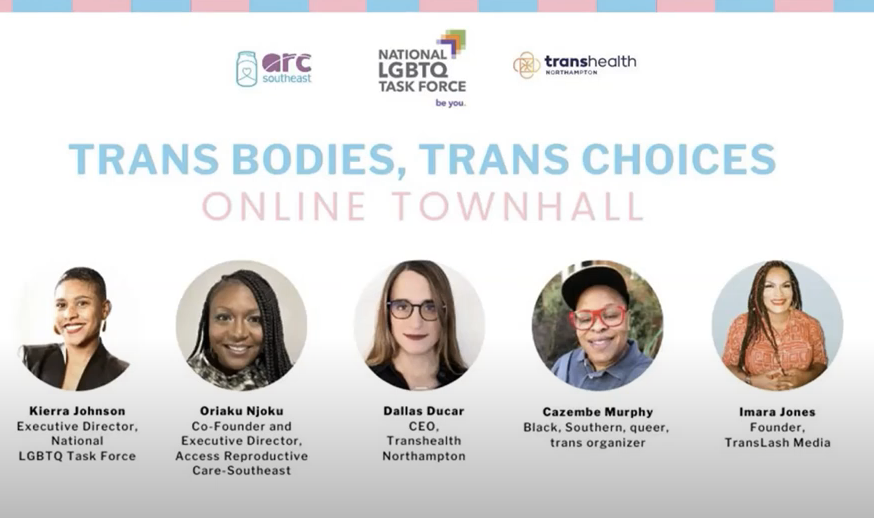by Socks Whitmore
It’s 4:00 a.m. I am collapsed on a queen mattress covered in pillows and plushies, my bare ankles tangled in the mess of blankets at the end of the bed. I turn to my right, slightly winded, and meet the soft brown gaze of the most beautiful vampire princess I’ve ever seen. Her hand touches my cheek, then slides down to my chest. Tattooed fingers trace my top surgery scars so lightly my still-numb skin can just barely feel it.
“Wow,” she says, gesturing to the flatness of my torso with a smile. Then she looks down at her own body and points at her full breasts, freshly shaved and smooth. “Wow.” She looks at me again. I smile back. We don’t need any other words to say what we feel. So I simply go back to kissing her.
If you are a member of the transgender, non-binary, and gender non-conforming community, you are likely no stranger to the fact that being in relationships while also being trans can be … complicated. Our physical forms are often works in progress, and our existence is far too often the target of hate speech and ignorant headlines. Even with our supportive cisgender partners, we can find ourselves guiding them through uncharted waters when it comes to body parts, labels, or something akin to a gender language barrier.
However, not all of us have cisgender partners; many TGNC folks fall in love with one or more kindred transgender spirits, forming what is commonly known in our community as a “T4T” (i.e. “trans for trans”) relationship. From two binary trans people with a heterosexual dynamic, to a polycule of nonbinary and genderfluid humans, these partnerships are as wonderfully varied as queer people themselves.
Take my current relationship, for instance. I met my partner, a panromantic asexual transgender woman, shortly after I had ended a four-year relationship with a bisexual cisgender man. She was the recording engineer and technical director for a project I was tracking vocals on, and when she mentioned that she’d be taking time off for her breast augmentation surgery the next month, I asked her if she had anyone coming to take care of her during her recovery. She shyly admitted she wasn’t very good at asking for help, and I said, “Cool, I’m coming Tuesday.” I showed up as promised, thinking it would be a one-time favor for a new friend, but something about her just kept me coming back. And hey, the rest is history.
As a *demi-panromantic, asexual, and agender/gender non-conforming person, when someone experiences attraction to me, it often raises questions about who they see me as and what they’re really attracted to. Part of what brought the two of us together was the conversations we had about asexuality and queer platonic relationships (aka QPRs)—we actually began our relationship as platonic partners and later realized that it had blossomed into something more. In both the platonic and the romantic chapters of our story, the emphasis has been on providing support in the ways our previous relationships had lacked. And after just eight months of knowing each other, I have noticed with gratitude the difference in how my girlfriend affirms and cares for gender, sexuality, and even consent.
A lot of it is the little things. She calls me her “dragon” (an enchanted non-gendered term of endearment that I love) and creates spaces where I can feel like the strong one. I seek out feminine language to include in my conversations with her, like “enchantress,” “goddess,” and “hey, girly.” She made a point of shifting her language around body parts when I explained what words felt icky or not right for me. I make spaces for her to be soft and delicate, something that felt forbidden before she transitioned and was being perceived as male. Before my top surgery, she would check in with me about my chest binding to make sure I was being safe and taking breaks. At every opportunity, I make sure to compliment her on her hair, dresses, and make-up—anything that I know will make her feel girly and beautiful. We’re both always on the lookout for affirming gifts to give each other, and we casually exchange pre-transition clothes and belongings without a second thought. And the list goes on; a myriad of threads that form a tapestry of love and support.
It’s also in the unspoken things. Even though our trans experiences are not identical by any means, so much of our emotional connection starts with understanding one another on a deeper level. We never have to explain why something feels affirming, or why at times we need certain things to relieve dysphoria. We don’t have to explain what dysphoria is or feels like. We don’t need to worry about our partner’s chosen family and social circle being safe and accepting. We are also conscious of how anxiety-inducing it can be to enter new spaces, and we always attend to each other’s sense of safety. Our relationship has more room to breathe and grow because the focus isn’t on being trans, but on being ourselves together.
To be intimate with someone who has no preconceived expectations for how parts are “supposed” to operate is liberating. To be supported in your transition by someone who understands it and holds actual joy for you is exhilarating. The conversations we have, the inside jokes, the shared desire to see more queerness in media; we experience life differently from our cisgender peers, and the way our histories contain little echos of each other is just one facet of our secret language. Take it from a dragon and a vampire princess—being in love with another trans person is magical.
*Definitions
Demisexual/Demiromantic: Demisexuality and demiromanticism are subsets of asexuality and aromanticism, respectively, as are the rest of the identities on this list. Demi is French for “half,” and was first coined to describe a person who does not experience attraction to an individual until a significant emotional bond has formed. This works off of the idea of primary attraction and secondary attraction. Primary attraction is attraction to people based on first impressions, such as appearance or how they smell. Secondary attraction is attraction to people that develops over time, and forms out of the relationship one has with a person, and their emotional connection. This can be applied to both romantic attraction and sexual attraction. Demisexuals or demiromantics do not experience primary attraction, but do experience secondary attraction.
Pansexual: Used to describe a person who has the capacity to form enduring physical, romantic, and/ or emotional attractions to any person, regardless of gender identity. This is one of several terms under the bi+ umbrella.
Asexual: Asexuality is probably the most well-known of the a-spec identities. Many people who identify with one of the subcategories of asexuality will use asexual when talking about their identity in public because it’s the easiest to explain. A simple definition that I use is: Someone who does not experience sexual attraction towards anyone. It’s important to remember, however, that attraction and action are not always the same: some asexuals may be repulsed by the idea of sexual contact and won’t engage in it, but others may be sex-neutral or sex-positive and will have sex. Some asexuals have a libido or will masturbate but won’t be open to sex with someone else, while others may not have a libido but will have sex with a partner because of the sense of connection that comes from it. Everyone experiences their asexuality differently, so it’s important not to make assumptions about an asexual person or their experiences.
Agender: As first reported by them., “agender” refers to people who don’t identify themselves with any particular gender. This can mean being genderless, lacking gender, or having a null gender. However, people also use “agender” to mean identifying as gender-neutral or having an undefinable gender.
Featured image courtesy of Broadly’s Gender Spectrum Collection.

Socks Whitmore (they/them/theirs) is a writer, stage and voice actor, and lyricist-composer rooted in voice and text. A graduate of CalArts, the range of their writing spans from musical theater to narrative design for games to poetry, short fiction, and op-eds. They have been produced by New Musicals Inc. and Overtone Industries and published by American Composers Forum, the Sappho Small Talk blog, and Queer Quarterly magazine, among others. Learn more at https://sockswhitmore.com.


